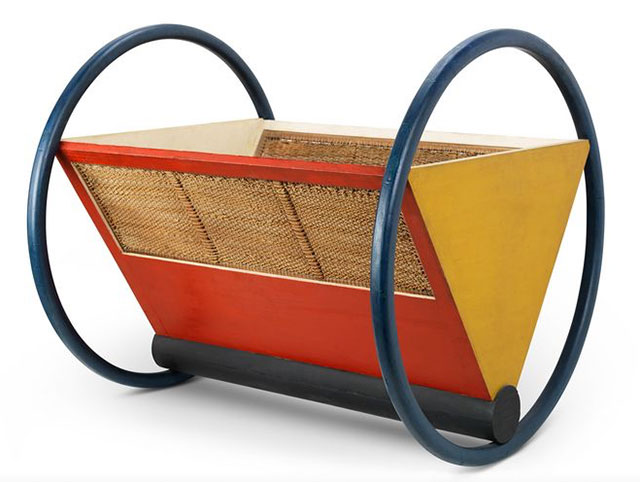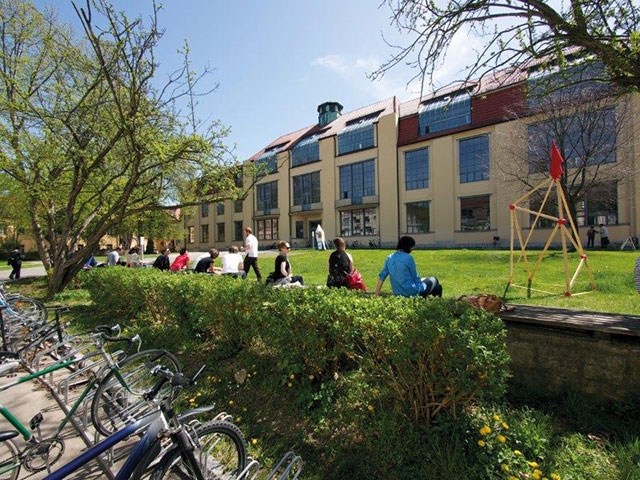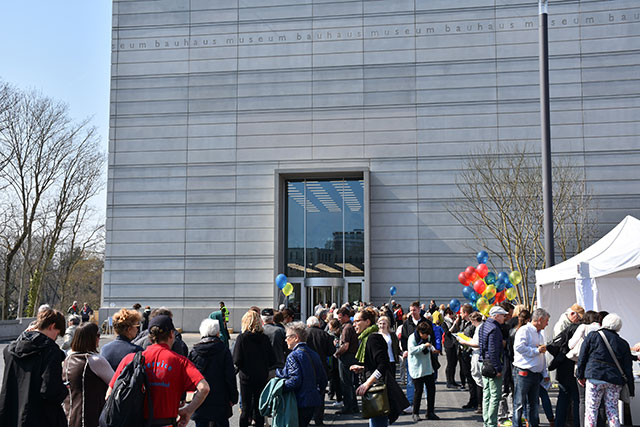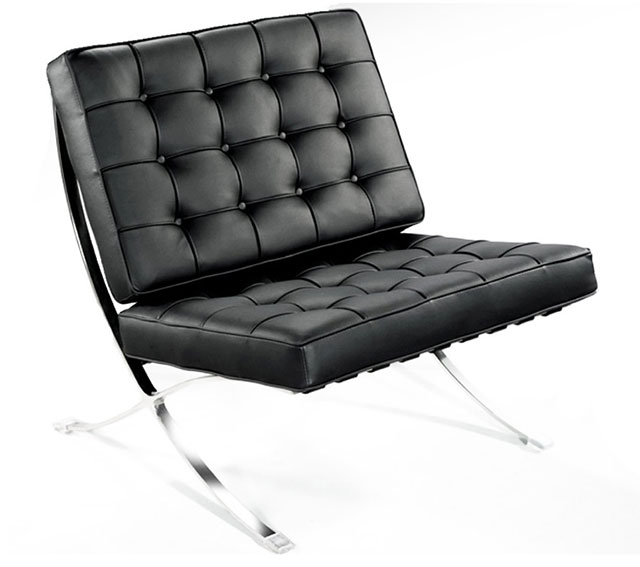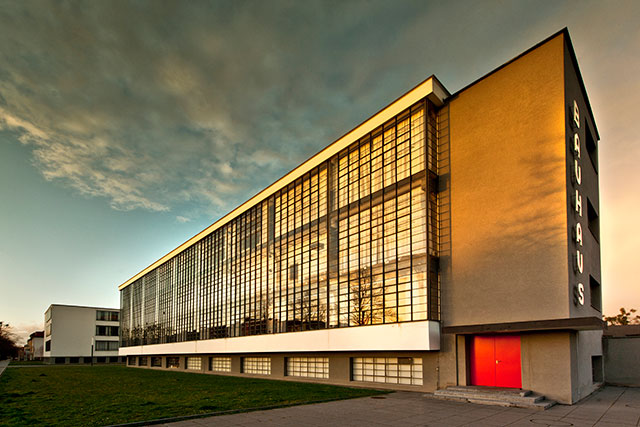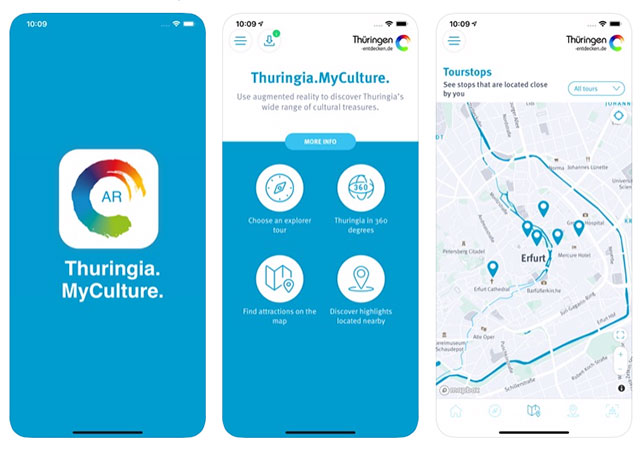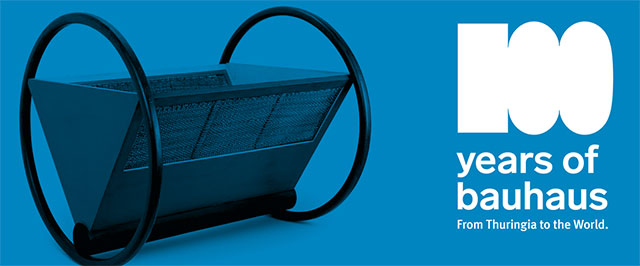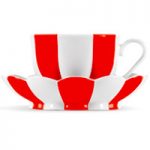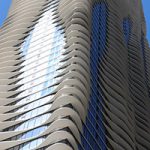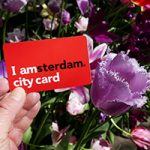Ask 10 people what “Bauhaus” means and you’ll get 10 different definitions.
“It’s all about streamlined, modern architecture, isn’t it?”
“It’s those funky chairs in the office.”
“Well-designed and well-priced?”
Bauhaus is all of those and more, from lamps and pottery to paintings and typefaces — even babies’ cradles. From its foundation in 1919, the Bauhaus movement has been – and continues to be – a major influence on our modern society.
This year, Bauhaus, a design revolution that originated south of Berlin (in Weimar and Dessau, aka BauhausLand), turns 100! And here’s where to take it all in.
Bauhaus Museum Weimar
An avant-garde chair; a stylish cradle; a ground-breaking painting: it’s no surprise that international art critics are excited by the new Bauhaus Museum Weimar.
Following its April 6th opening, celebrations for the centenary of the Bauhaus architecture and design movement got off to a flying start. Some 18,000 visitors from around the world joined the festivities on opening weekend.
Designed by German architect Heike Hanada, this elegant concrete cube is home to some of the world’s most treasured examples of Bauhaus art and design.
Treasures on show include one of only three original Barcelona MR 90 chairs designed by Mies van der Rohe for the 1929 Barcelona World’s Fair. The chrome-plated steel with button stitching on the leather upholstery was considered revolutionary at the time.
Equally iconic is Peter Keler’s geometric cradle (top photo), a deceptively simple 1922 design based on a blue circle, a yellow triangle and a red square. Significant paintings include Lyonel Feininger’s Gelmeroda XI. Visit this Cubist interpretation of the Gelmeroda church, only 2.5 miles from Weimar, then drive or cycle out to see the real thing.
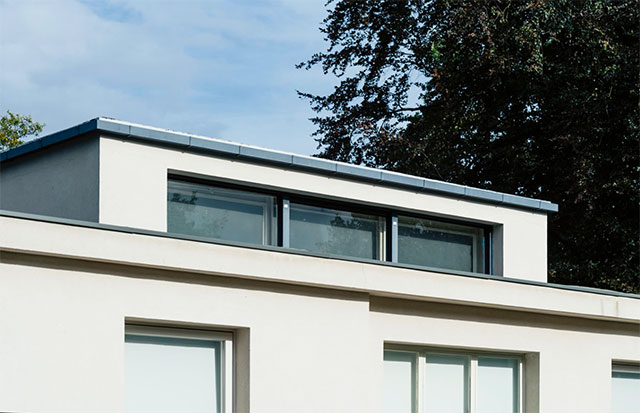
[Skylight windows in the central living room of the Haus Am Horn]
The First Bauhaus House
Set in an elegant park, Haus am Horn is the first example of a Bauhaus-influenced home. This compact, cubic house, where rooms overlooked an inner courtyard, was designed by Georg Muche for the first Bauhaus exhibition in 1923, developed as a prototype for mass production. Haus am Horn reopens to the public on May 18.
Party Like It’s 1920
Bauhaus birthday celebrations continue throughout the year. On June 22, the Thuringian Dance School will host a Bauhaus-inspired Summer Ball in the Weimar Hall, featuring theater, opera, comedy and dance.
On August 10, the Fest am Platz: The Bauhaus for Everyone event in front of the Bauhaus Museum Weimar is all about family fun and involvement.
And from September 26 to 29, the Triennale der Moderne marks the links between the three UNESCO World Heritage Sites of Modernism: Weimar, Dessau and Berlin.
Bauhaus Apps
Use Bauhaus +, the free Android app for the Bauhaus Museum Weimar and from May, the Haus Am Horn. Follow the audio tour and keep on top of the latest events. It’s also handy to use at home for more information on Weimar’s Modernist movement.
The iOS Thuringia app, Thuringia.My.Culture, leads you to 13 important places in the new Weimarer Moderne cultural district around the new museum, as well as 21 Modernist icons on the “Grand Tour der Moderne”, highlighting Thuringia’s most significant architectural innovations between 1900 and 2000.
Time + Euro-Saving Tips
The BauhausCard (EUR11), the entrance ticket to the Bauhaus Museum, also includes free admission to 70 other attractions in Thuringia on both the day of your visit and on the following day. Use it to see museums, castles, palaces and for public guided town tours.
Throughout 2019, special events are happening across BauhausLand, first and foremost in Dessau and Weimar. Join the party!
And follow the action on social media using hashtags #gobauhaus #moderndenken and #visitthuringia.
